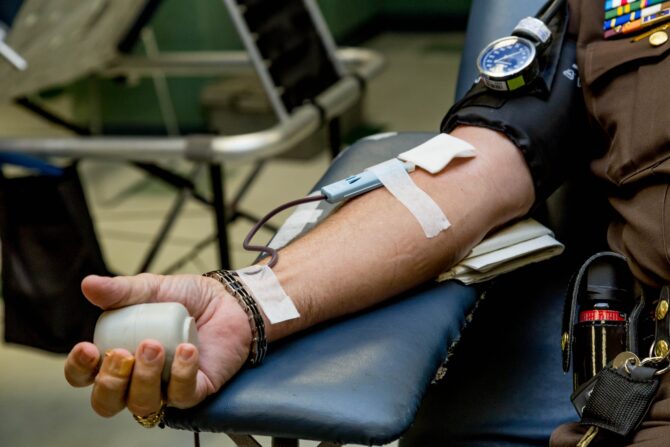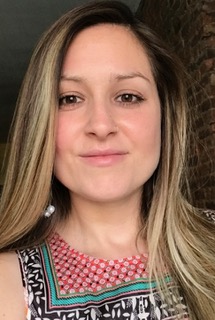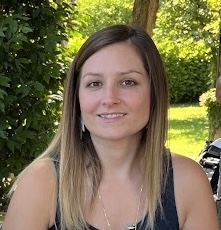Five Differences Between Dialysis in France and the US: A Personal Account
Real life stories


FE contributor Rachel found travelling to her French second home especially challenging due to her partner’s needs for dialysis. Here, she compares their experiences between the US and France, and offers some valuable advice for those in a similar position.
Bonjour! My name is Rachel, and my partner Andy and I are part-time holiday home owners, splitting our time between Provence, France, and Pittsburgh, Pennsylvania.
When Andy became unexpectedly ill just a few days after returning home from our first summer abroad, the long and arduous steps of introducing dialysis into our lives were set in motion, creating a completely new routine. For those who do not know what dialysis is, it is the process of removing water and toxins from the patient’s blood because their kidneys can no longer remove them naturally.
With these changes came different eating habits, limitations of physical activities due to lack of energy or stamina and, most importantly, a complete change in how we travel. Longing to make it back to our new home in France, we began to research how to travel on dialysis but came up short at every turn. There are over two million people worldwide who depend on dialysis in order to live.
Was the typical dialysis patient not traveling? We were beginning to feel a bit hopeless until a French friend stumbled across a clinic not too far from our village, located in the nearby town of Orange. When we bought our little village house just a year and a half ago, we never expected that we would be navigating the French healthcare system and beginning the nerve-wracking treatments of dialysis abroad. The discovery of the clinic opened up the possibility of still being able to live our lives while Andy was being kept alive with dialysis. Despite Andy not speaking any French, we decided to take the plunge, spending last summer in our charming Provençal town while visiting Orange a few times a week in order to have the treatments. So, after experiencing dialysis for a full summer in the south of France and also experiencing it for half of a year in the States, here are the main differences between dialysis in the U.S. and dialysis in France.
1. The Amount of Time Spent Between the Patients and Nurses
One major difference between dialysis in France and dialysis in Pittsburgh is the amount of time the nurses in France invest in their patients. The clinic in Orange was very small, and the section that Andy found himself in only had eight chairs, which were rarely ever full. In the clinic, there were anywhere from one to three nurses there to assist patients. Because the ratio of nurses to patients was so low, the patients were able to receive not only impeccable care but also extended time with the staff. This created a dynamic where the nurses would get very close and invested in each of the patients’ lives. Back home in Pittsburgh, there are around 40 patients for just a handful of nurses. Despite Andy spending about 15 hours a week with the staff in Pittsburgh, not enough time is spent between the patients and the nurses in order to feel a sort of connection or emotional closeness. Pleasantries are shared, but time doesn’t allow for much else.
The closeness to the patients in France was showcased during one particular treatment that will forever stick with Andy. During a previous treatment, he and another patient struck up a conversation and began sharing their experiences with dialysis and the potential of a transplant. She had mentioned that she wasn’t considered a good candidate for a transplant and listed off a handful of reasons why. She had resigned herself to having to have dialysis for the rest of her life, and while she didn’t exactly seem hopeless, she seemed to just accept her circumstances.
When Andy came home that afternoon, he sadly relayed her story to me. “If she lived in the U.S., she would be able to get a transplant,” he said, frowning. Her situation was one that stuck with us and was the catalyst for highlighting the major differences between the treatment in the two countries. Up to that point, we had seen her around the clinic, but it wasn’t until this particular day that Andy was sitting next to her, and they shared each other’s stories.
When Andy went back for his treatment just two days later, however, her seat was empty. In a bit of a panic, he inquired if she was ok, and the nurses had the most wonderful news. “She was called yesterday for a transplant. The last we heard, it went well, and she is doing good,” the nurse confirmed.
It was such an incredible turnaround from their conversation just hours earlier that Andy was in absolute disbelief. Then, something happened that would never have happened in the U.S. Together, Andy in his chair, all hooked up with needles and tubes, and the nurses, standing by his side, face-timed her while she was in the hospital to see how she was doing and to congratulate her. This situation really touched Andy, who had come home feeling a little somber about her circumstances after hearing her story. When the call had finished, one of the nurses explained how truly lucky the patient was.
“In France, they call two people on the transplant list. The organ goes to whoever responds first,” Nurse F. started. “If she didn’t answer or call back first, the chance of her getting another call was very slim.” The idea of calling back a minute too late, only to find that another person got to the kidney first, is a thought that is so heartbreaking to me. When I expressed this sentiment to Andy, though, he simply shrugged. “Nurse F. essentially said that the kidney wouldn’t last too long. They can’t just wait around, hoping that the first person will eventually get back to them in time. They need to use the live organ.”
It makes total sense, but it is still sad for the second person who ends up calling back a little too late. Her transplant brought up a lot of conversation around the clinic, exposing many more differences between our two healthcare systems.
2. The Differences Between Live Donations in the U.S. and France
Another major difference we discovered was the stigma against donating a kidney, or any organ for that matter, in France.
Andy has been incredibly fortunate and received three live kidney donations. Two were from family members who had been a match, and one was from a family friend who was also a match. When the nurses heard this in France, they couldn’t believe it.
“Friends would never donate a kidney in France,” the nurse said, a little shocked by Andy’s luck. He also added that he had a few friends back at home who had been willing to be tested to see if they could be a potential match for the next transplant. “Most of the organ donations in France come from the deceased,” Nurse M added. We were surprised to hear this, especially because France seemed so progressive in the way they treated kidney patients compared to the U.S. This made us want to dig a little deeper into the subject.
When looking into it, we discovered that in 2011, France had revised its laws for live kidney donations, allowing people with a “close and emotional bond” to become potential donors. The law previously stated that donations were only limited to the mother or father of the recipient. The new revision, however, allowed others to volunteer, such as a spouse, the parents of a spouse, brothers, sisters, sons, daughters, aunts, uncles, first cousins, or even grandparents. It also opened up the possibility to friends who could prove their connection to the patient for a designated amount of time. These donors, though, have to get authorized and must go in front of a High Court Judge in order to obtain formal consent, a process which we were told is long and arduous.
“A committee of experts is also involved in the procedure in order to provide the donor with information on the medical, social, and financial consequences of the organ removal and to decide whether to authorize or refuse the organ removal.” (agence-biomedicine.fr)
With all of the information we found, it was almost as if France was trying to talk potential donors out of donating, adding more hoops to jump through along with all of the negatives of giving. When asked why it was so difficult for loved ones, be it family or friends, to donate, Nurse M explained through a flurry of translations via Google that organ trafficking was a real thing and that to curb the practice, there were a slew of laws and procedures that a donor and recipient must take in order to even be considered for the procedure.
In 2022, 33% of kidney transplants in the U.S. were from live donors, as opposed to the 14% in France. Could it be that the ease with which you can become a donor in the U.S. lessens the stigma?
When Andy’s friends offered to check if they were a match, all that was asked of them was to fill out some paperwork and visit the doctor in order to get the process started. At no point does the government get involved, and is there a need for authorization. Or maybe it is the fact that some American celebrities have come out sharing their stories of kidney transplants, creating normalcy around the disease and treatment. Most notably, the actress and singer Selena Gomez has shared her transplant story along with actress Sarah Hyland and actor-comedian George Lopez.
3. Making House Calls
The third thing that we thought was really interesting and completely different from dialysis in the U.S. were the schedules of the nurses. Back in the U.S. the nurses at the dialysis center are there incredibly long hours, with very few days off each week, and it is their only job. In France, the nurses worked full time, but not strictly in the dialysis clinic.
In our clinic, we had three absolutely wonderful nurses who would rotate. One nurse was always at the clinic, while the other two would be out making house calls for non-dialysis-related medical reasons in and around Orange. One of them would start the shift by opening the clinic at 8 am. The other nurse(s) would arrive at the clinic after making house calls a few hours later and replace the nurse who had opened, essentially sending them out to make a few house calls.
“You should stay longer!” Nurse T pleaded with Andy. “You aren’t sick of my terrible French yet?” He joked.
“He just wants you to stay, so we have work!” Nurse M smiled.
“If you are here, then we don’t have to make as many house calls!” she continued.
The Orange facility wasn’t ever full when we were there. Since it was located in the south of France, patients did pop in for a few days here or there while they were on holiday, but, in general, the clinic was never at full capacity. “More than half of the patients back home are there because of diabetes,” Andy explained during one of his treatments. Nurse F shook her head, “not here, it’s all old age.”
This may explain the lack of clientele at the clinic in France as opposed to the ones in the U.S. With fewer obese people and completely different eating and exercise habits, our nurses in Orange may never have enough patients to become full-time as they’d like.
4. The Patients Are Much More Self-Sufficient
On our first day at the new clinic in France, we were surprised to learn that everyone there stuck themselves. What that essentially means to our non-dialysis readers is that each patient inserted their own needles. Back at home in Pittsburgh, the nurses make their way around the room, setting up each patient’s machine and doing their fistula sticks. This is a very time-consuming thing, and usually, Andy sits there for 30-45 minutes just waiting to be put on the machine. Not being one for handling needles, Andy was relieved when the nurses confirmed in France that they would be the ones taking care of his setup and sticking.
One morning, we arrived earlier than the opening nurse and found the dialysis room in a bit of chaos. All the patients who were usually sitting and receiving treatment when we normally came were in the process of setting themselves up. Some were weighing themselves and taking down their numbers; some were sterilizing their needles and tubes, while others were programming their machine computers. They were so self-sufficient that we just sat there in awe of them all. By the time the first nurse came from their early morning round of house calls, everyone had been set up, and their treatments started, with the exception of Andy, of course. While the nurses at this clinic were essentially just there to help if anything were to go wrong, they also walked around, checking everyone’s screens and making adjustments when needed.
Just a few weeks into treatments, however, the nurses began teaching Andy. Wanting him to feel a sense of independence, they had him start a routine when he came in for treatments. He would begin by weighing himself and writing down his base weight on his chart; then, he would collect his personal box with all of the items needed for his treatment. While this may seem like a small task to some, for someone like Andy who could only count to ten in French before arriving, giving numbers in the 50s and 60s (when giving his weight in kilos), let alone filling out his own chart was a big feat, and helped him feel more in control in a clinic where some things often got lost in translation.
5. Ambiance and the holistic approach
There are many times when Andy comes home from dialysis in Pittsburgh completely mentally drained with a splitting headache. Dialysis clinics in the U.S. are notoriously loud; there is really no way around it. Having so many patients crammed into a room together, some talking, others loudly watching T.V. in order to drown out the talking, mixed with the incredibly loud sirens that go off when the machines are malfunctioning or have ended their treatment leaves the already hyper-stressed Andy in an incredibly heightened state.
In France, it is the absolute opposite. Doctors and nurses in France believe in holistic care and apply that idea to caring for patients in dialysis. It is thought that if the patient is calm, they will be able to receive their treatment better and leave in a better state of mind. On our first day of dialysis, and I say OUR first day because I accompanied him many times to his treatments, we were floored at how relaxed everything felt. The room was incredibly quiet, and if the nurses wanted to speak with you, they did it in a hushed tone so as not to bother anyone else around them. Many times, Nurse T would softly play some ambient music from his portable speaker, wafting relaxing tunes through the space. And, unlike the U.S., halfway through each treatment, a coffee cart would come around, offering patients (and their guests) a cup of tea or coffee and a small treat. It wasn’t because they thought the patients couldn’t go four hours without food. In France, food and drink are a pleasure, something to indulge in and enjoy. The mindset behind the mid-treatment snack was more tied back to the holistic approach. Patients with a cup of camomile tea and a madeleine are going to have more positive thoughts about treatment and be more relaxed and comfortable than ones that don’t have it. After everyone had had their snack and trays had been taken away, the lights were dimmed, and patients would usually nod off for an hour or two, so relaxed that they could rest while their treatments finished up.
Back in the States, Andy’s clinic does not allow patients to eat while on the machines, so this was a special treat for him while in France. As treatments were ending in France, the typical sounding alarms that could be heard in the U.S. were nowhere to be found. Being replaced with a soft rendition of Twinkle, Twinkle, Little Star from the machines, patients were roused from their naps by the soft lullaby used to calm children. The holistic approach was brought up quite a few times on our trips to the Orange clinic. When the nurses were looking over Andy’s charts, sent from his home clinic back in Pittsburgh, they were surprised by all of the medications he had been prescribed.
“This one,” Nurse F pointed to the chart, “it is for?”
“Anxiety,” Andy responded matter-of-factly.
“Andrew,” the nurse started, “it is not good to have all of these meds! Why are you anxious? Is it the treatments? We must find another way. Perhaps meditation? Breathing exercises?”
In the U.S., Andy was quickly written off as being anxious, and the staff never asked why. It didn’t matter why he was anxious; back home, they just wanted to quickly deal with it. In France, having the time and compassion, they wanted to get to the root of the problem and fix it, not dull it. This was one of a few instances where the nurses would try to get to the root of a problem in order to eliminate one of his medications.
The differences felt very alien during our summer abroad, but now that we are home, they don’t feel so subtle but more so glaring. There are pros and cons to each system, but after experiencing both, Andy has become very in tune with the holistic approach to patient care and misses his nurses in Orange. While the language barrier and the fear of the unknown made us nervous at first, we both can’t wait to return to our little village home in a few months and, if necessary, our clinic in Orange.

Meet the author
Rachel Lipko is a 30-something freelance travel writer who is settling in to her part-time Provence life. She writes about her experiences in her blog When in Provence.
Share to: Facebook Twitter LinkedIn Email
By Rachel Lipko
Leave a reply
Your email address will not be published. Required fields are marked *




